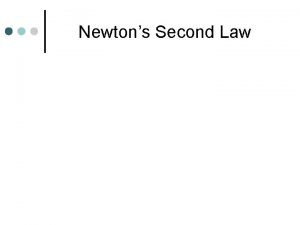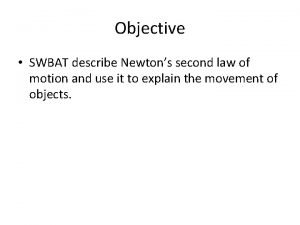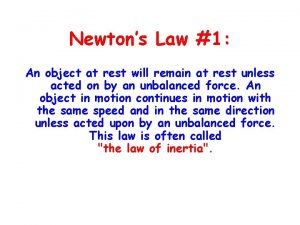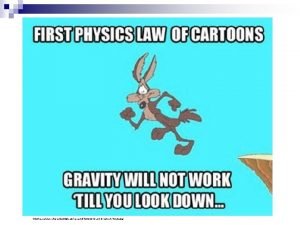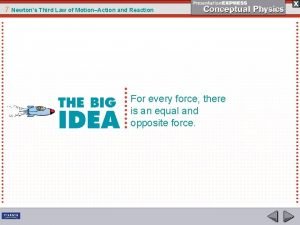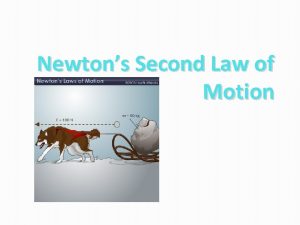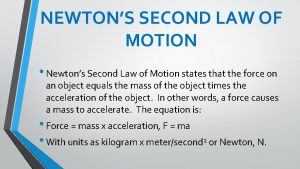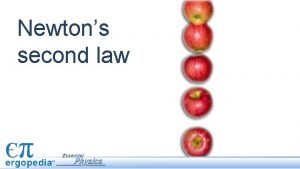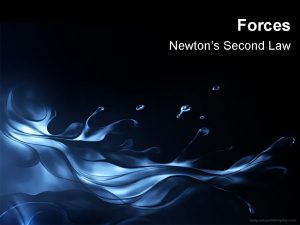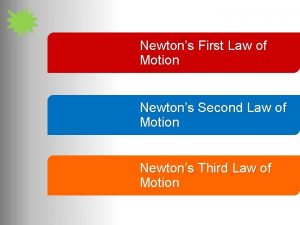Newtons Second Law of Motion How fast does












- Slides: 12

Newton’s Second Law of Motion How fast does it go?

Acceleration • An unbalanced force causes something to accelerate.

Acceleration • Acceleration is directly related to the size of the force and the direction of the force. • It accelerates in the direction you push or pull it.

In other words…. Large Force = Large Acceleration F a

In other words…. Small Force = Small Acceleration F a So…. if you push twice as hard, it accelerates twice as much.

But there is a twist…. • Acceleration is INVERSELY related to the mass of the object.

In other words…. . using the same amount of force…. F Small acceleration Large Mass a Large acceleration F Small Mass a

Newton’s Second Law • Newton, that brilliant genius, observed those “rules” of acceleration and came up with his second law of motion. It is both a formula & a law.

Newton’s Second Law • The acceleration of an object is directly proportional to the net force & inversely proportional to it’s mass. • F = ma • Force = Mass x Acceleration

Okay then… • First, you need to know the units of Force, Mass & Acceleration. – The units used force are Newtons (N) – The units used for mass are kilograms (kg) – The acceleration units are meters per second squared (m/s 2).

Practice Problem 1 • An object is moving with an acceleration of 3 m/s 2 and has a mass of 55 kg. What force was applied to the object? • F = ma F = (55 kg)(3 m/s 2) F=? 2 F = 165 kg·m/s m=55 kg F = 165 N a=3 m/s 2

Practice Problem 2 • A force of 245 N is applied to an object. The object then accelerates at a rate of 4. 2 m/s 2. What is the mass of the object? • F=ma SO m=F/a F=245 N m = (245 N)/(4. 2 m/s 2) m=? m = 58. 33 kg a=4. 2 m/s 2
 Application of newton's laws
Application of newton's laws What is the second law of motion
What is the second law of motion Newtons second law in soccer
Newtons second law in soccer Describe newtons second law
Describe newtons second law Newtons second law
Newtons second law Newtons second law example
Newtons second law example Newtons 3 rd law of motion
Newtons 3 rd law of motion Newtons 3 rd law of motion
Newtons 3 rd law of motion Third law of motion
Third law of motion Rd law
Rd law Newton's first law of motion meme
Newton's first law of motion meme Newton's third law
Newton's third law Newton's third law
Newton's third law

